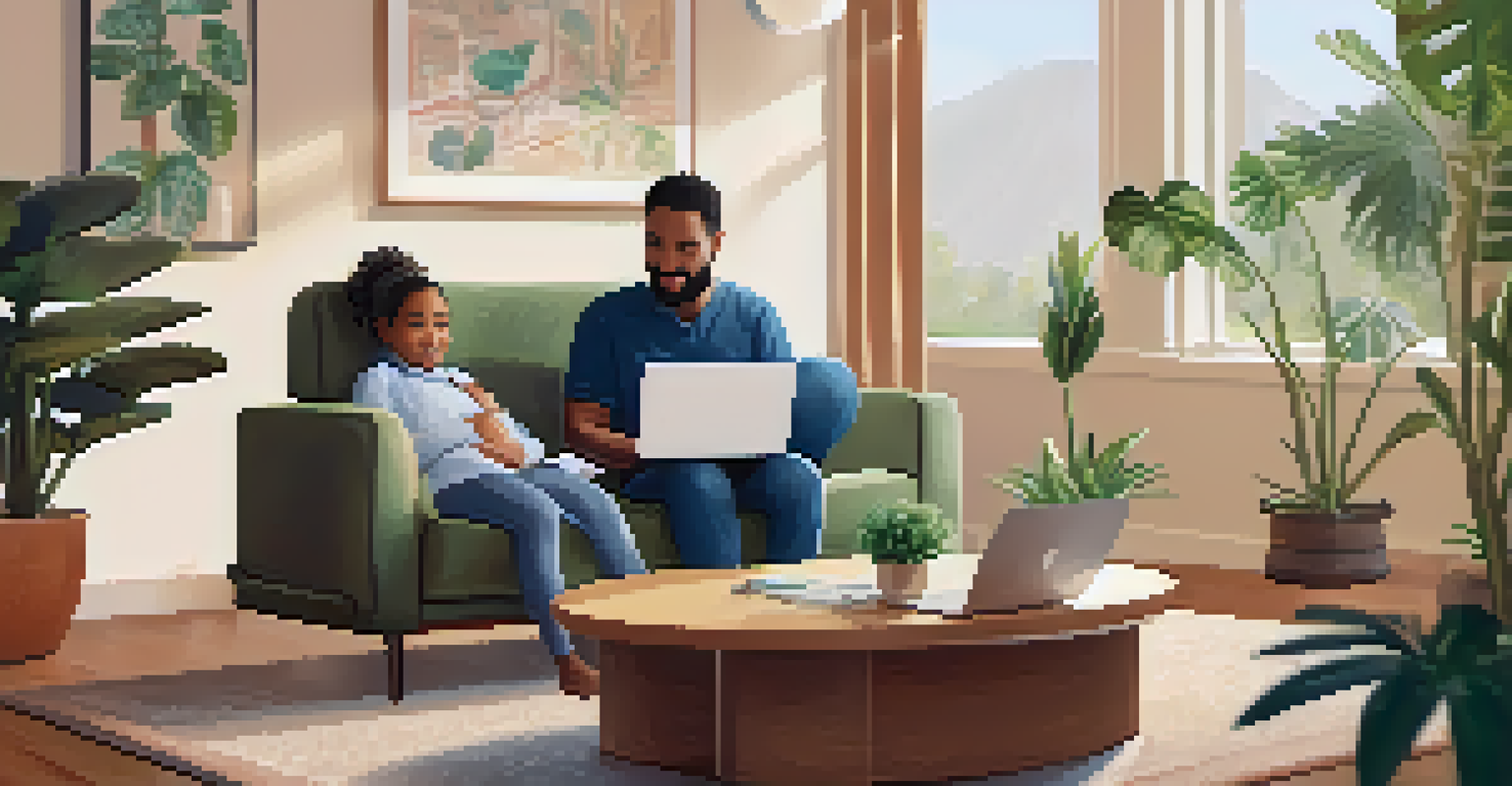Access to Healthcare in Hawaii: Challenges and Solutions

Understanding Healthcare Access in the Aloha State
Hawaii is often celebrated for its stunning landscapes and rich culture, but access to healthcare presents a unique set of challenges. Many residents, especially those in rural areas, face significant barriers when seeking medical care. Geographic isolation, limited healthcare facilities, and a shortage of healthcare professionals contribute to these issues.
Health care is a right, not a privilege.
The state's small population can also complicate matters. While urban areas like Honolulu may have more resources, rural communities often struggle with fewer healthcare options. This discrepancy creates a two-tiered system where some residents receive timely care while others must travel long distances for basic services.
Moreover, the diverse population in Hawaii adds another layer of complexity. Different cultural beliefs and languages can lead to misunderstandings in healthcare communication, further hindering access. Understanding these nuances is crucial in addressing the challenges effectively.
Geographic Barriers to Healthcare in Hawaii
One of the most significant challenges in Hawaii is its geography. The state consists of several islands, making transportation a hurdle for many residents. For those living on less populated islands, reaching healthcare facilities can be a daunting task, often requiring expensive and time-consuming travel.

This geographic divide means that some communities have limited access to specialists and emergency care. In emergencies, this can lead to delays that jeopardize patient outcomes. Residents may find themselves in a situation where they need to fly to another island for treatment, which isn't feasible for everyone.
Geographic Barriers to Healthcare
Hawaii's unique geography complicates access to medical facilities, especially for those on remote islands.
Efforts are ongoing to improve transportation options, but the reality is that these geographic challenges remain a significant barrier to timely and effective healthcare access. Innovative solutions, such as telehealth, are beginning to emerge as potential ways to bridge these gaps.
Economic Factors Impacting Healthcare Access
Economic disparities play a crucial role in healthcare access in Hawaii. Although the state boasts a relatively high median income, the cost of living is also among the highest in the nation. This economic pressure can make healthcare unaffordable for many, especially those without adequate insurance coverage.
The greatest wealth is health.
Many residents find themselves choosing between basic necessities and healthcare, leading to delayed or foregone treatments. This situation is particularly acute for low-income families and individuals who may rely on state assistance programs, which are often underfunded.
Addressing these economic barriers requires a multifaceted approach, such as expanding Medicaid, increasing funding for community health centers, and enhancing insurance options for residents. By improving financial access to care, Hawaii can take significant strides toward reducing healthcare disparities.
Shortage of Healthcare Professionals in Hawaii
The shortage of healthcare professionals is another pressing issue affecting access to care in Hawaii. Many healthcare providers choose to work in urban areas where they can earn higher salaries and have access to more resources. This trend leaves rural communities with fewer doctors, nurses, and specialists.
As a result, patients often face long wait times for appointments, and some may even have to forgo necessary care. The lack of adequate staffing can lead to burnout among existing healthcare workers, further exacerbating the situation. This cycle creates a challenging environment for both providers and patients.
Economic Disparities Affect Access
High living costs in Hawaii create financial barriers, making healthcare unaffordable for many residents.
To combat this shortage, initiatives aimed at recruiting and retaining healthcare professionals in underserved areas are critical. Offering incentives, such as student loan forgiveness or housing assistance, could encourage more providers to consider careers in these communities.
Cultural Barriers to Healthcare Access
Cultural beliefs and practices significantly influence healthcare access in Hawaii. The state's diverse population includes Native Hawaiians and various ethnic groups, each with unique perspectives on health and wellness. This diversity can sometimes lead to misunderstandings between patients and healthcare providers.
For instance, traditional healing practices may be preferred over conventional medical treatments for some communities. When healthcare providers do not acknowledge or respect these traditions, it can create a barrier to effective communication and trust, ultimately impacting patient care.
By promoting cultural competency training for healthcare professionals, providers can better understand and cater to the needs of diverse populations. Building trust and acknowledging cultural differences is key to improving healthcare access for all residents.
Telehealth: A Potential Solution for Hawaii's Challenges
Telehealth has emerged as a promising solution to some of the healthcare access challenges faced in Hawaii. By leveraging technology, patients can consult with healthcare providers without needing to travel long distances. This is especially beneficial for those living in remote areas who may find it difficult to reach a clinic.
During the COVID-19 pandemic, telehealth services expanded rapidly, demonstrating their effectiveness in maintaining patient care continuity. Many residents became more comfortable with virtual visits, and this shift may help to bridge the access gap moving forward.
Cultural Competency is Crucial
Understanding and respecting diverse cultural beliefs is essential to improving healthcare communication and access.
However, for telehealth to be truly effective, it is essential to ensure that all residents have access to reliable internet and technology. Continued investment in telehealth infrastructure will be crucial in making this solution accessible to everyone across the islands.
Community Initiatives to Improve Healthcare Access
Many local organizations and community health programs are working tirelessly to improve healthcare access in Hawaii. These initiatives often focus on providing services directly to underserved populations, addressing both medical and social determinants of health. From mobile clinics to educational workshops, these efforts are making a tangible difference.
Collaboration between community organizations and healthcare providers can lead to innovative solutions. For example, partnerships that bring healthcare services to schools can help reach children and families who might otherwise lack access. Such initiatives not only provide immediate care but also foster a culture of health within communities.

Ultimately, empowering communities to take charge of their health leads to a more sustainable solution. By focusing on local needs and strengths, these initiatives can create a ripple effect, improving overall healthcare access across the state.